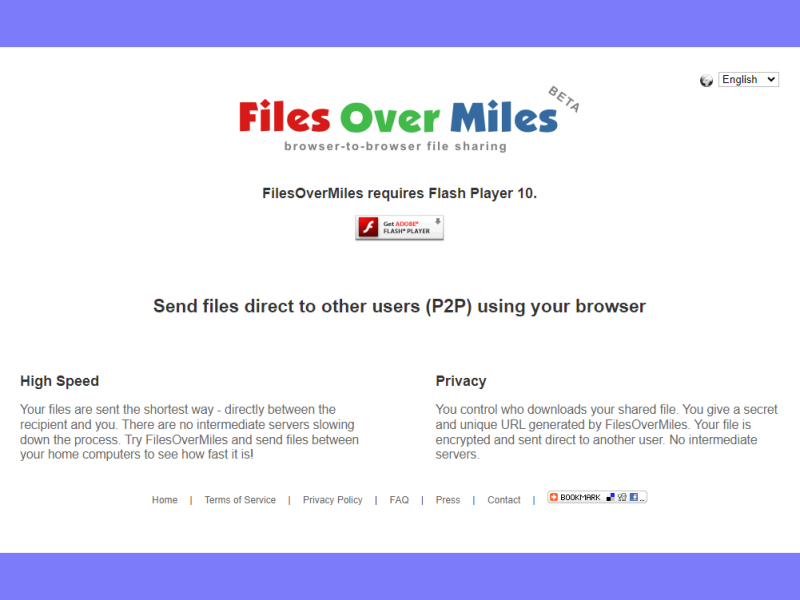Today’s file-sharing world provides an array of possibilities. There are numerous secure file-sharing tool, each with its own unique set of features. Learning about the different platforms might help you decide which one is best for you.
File sharing should be a simple process. It can be challenging to choose the best one for a specific service. Although many of these file-sharing tools have premium plans, several offer free versions that will be enough until an upgrade is required. We will be looking into the different types of file-sharing tools with their pros and cons.
What is File-sharing Tool?
File-sharing tool improves collaboration by making it simple to share data anywhere in the world. Users can use this software to share documents, photos, videos, and other file formats. It’s essentially a digital asset management system that works by allowing users to share access to storage space where they may download and upload things for others to view.
A single encounter, whether real or virtual, is insufficient for sharing all of the knowledge needed to complete a project. However, regular meetings can be costly, time-consuming, and ineffective. A team, especially in this day and age, needs to be able to work on projects remotely, share files, and collaborate effortlessly. This is the brand-new flex.
Top File Sharing Tools: Pros and Cons
The growth of technology in the 21st century has successfully pushed people away from traditional storage and sharing systems. File storage has transitioned from shelf paper storage to hard drives and online server-based storage systems (cloud). The following are the top 10 file-sharing tools that use encryption by default, providing more protection for your data and files:
Files.com
Files.com is a cloud-based file manager where you can store your files and securely share them via links. You can create personalized links for each invitee and end-date access to them. You can download, view or edit a file based on its level of access. Clients can also access the service via other systems such as Dropbox, Google Drive, and OneDrive.
Pros
- Makes onboarding simpler and faster.
- Manages different cloud storage solutions through a single interface.
- For securing files and folders, secure protocols are used.
- Gives organizations the freedom to store files in a HIPAA/PCI-compliant manner.
- It has a flexible price structure, making it appropriate for businesses of all sizes.
Cons
- There is no on-premises version available.
- The interface is difficult to use.
FileWhopper
You can use FileWhopper to share and transfer files by paying each time independently. Sending a huge file or folder to someone is a simple process. Your correspondent will receive a download link after you upload it to FileWhopper.
It is more user-friendly than some of its competitors due to its focus on file-sharing and lack of live collaborative features. Nonetheless, the size of your files may influence the amount you pay. FileWhopper includes an upload feature, as well as the ability to encrypt and password-protect your uploaded files. Here are FileWhopper’s pros and cons:
Pros
- Safe for sharing Legal documents and contracts.
- The files are accessible for 14 days.
- Supports Large files.
Cons
- If more than one individual wants to share files, the sender may be required to purchase additional downloads.
- File transfers to Mac or Linux users are currently unavailable.
Dropbox
Dropbox is a cloud storage service that allows you to access your files from a computer, tablet, or smartphone. Furthermore, Dropbox can notify you whenever you add or delete a file across all of your devices. You may also remotely wipe data from a stolen or lost device and share Dropbox files without an account.
Furthermore, Dropbox Business allows you to manage permissions, store files in a centralized location, and use admin permission controls to enforce access control. Here are Dropbox’s pros and cons:
Pros
- Allows teams to collaborate across numerous hardware platforms at the same time by automatically syncing files.
- Allows users to share files without logging in, allowing them to cooperate with outside parties.
- Flexible pricing alternatives
Cons
- Payment-per-use may be unnecessarily complicated for firms that move files frequently.
- Settings for difficult file synchronization.
Google Drive
Google Drive is a free file-sharing platform that allows users to store up to 15GB of data. You can use this method to keep track of your data no matter where you are. Google Drive allows you to share files with anyone by emailing links to your files, which anyone may download and view.
It is also possible to invite several persons to collaborate on the same document. Because of its storage and collaboration capabilities, Google Drive is suitable for remote work situations. Here are Google Drive’s pros and cons:
Pros
Small businesses can get free storage.
Pricing packages that are simple to understand are offered for both small and large businesses.
Mobile apps allow you to work from anywhere.
Cons
Google Chrome is the only browser that allows for offline use.
Password changes on an offline file may result in authentication difficulties.
Microsoft OneDrive for Business
To access files, you can use a computer, tablet, or smartphone with Microsoft’s OneDrive for business. When you change a file on one device, it automatically updates all of your other devices. You don’t need an Internet connection to access your files because you can access them even if you’re not connected to the Internet. SSL encrypts your stuff as well.
OneDrive’s file-sharing feature makes it simple to collaborate with others. Simply send a link to the recipient by email or through any messaging service, and they will be able to access the files without registering. The document scanning tool allows you to scan paper documents and save them to your phone. Here are Microsoft OneDrive’s pros and cons:
Pros
Small and large teams can use the same synchronization settings to secure offline file access.
File access can have an expiration date for projects with a limited scope.
Scan Documents on the go.
Cons
A regular target for Hackers.
Collaboration features are more complex than those seen in other software.
Apple iCloud Drive
Apple devices come with iCloud pre-installed, which gives 5GB of free online storage. You can access and organize data on either Mac or Windows devices. Rename or colorize key files to distinguish them from the rest. To share files with others, simply send a link to the recipient.
To protect your online data, Apple iCloud utilizes automatic backups. You can secure your devices with two-factor authentication to prevent unauthorized individuals from accessing them. Here are Apple iCloud Drive’s pros and cons:
Pros
- The easy-to-use system
- Lets Mac and Windows devices work together cross-platform.
- Simple synchronization.
Cons
Does not provide as much storage as the majority of its competitors.
Unavailable for Android.
Does not support collaboration.
Read Also
- Why Cloud Hosting for Small Businesses is a Smart Choice
- Fast and Secure Cloud Hosting for Startups
- The Advantages of Cloud Hosting for Businesses
- Why Cloud Hosting for Small Businesses is a Smart Choice
The Wrap-Up
File-sharing tool provides a creative space for us to complete our everyday office tasks. Even for onsite businesses, data, and files are constantly changing hands, and a lot of these tools will be useful for smooth file transfer.
Using any of these file-sharing solutions will speed up and increase the productivity of your work. As a result, you can select any of these excellent tools for your business. As your business expands, you can upgrade to the paid, Pro version to meet increasing demands. Furthermore, some of the applications offer additional functions that go beyond file sharing and can even streamline your review and approval process for all files.


